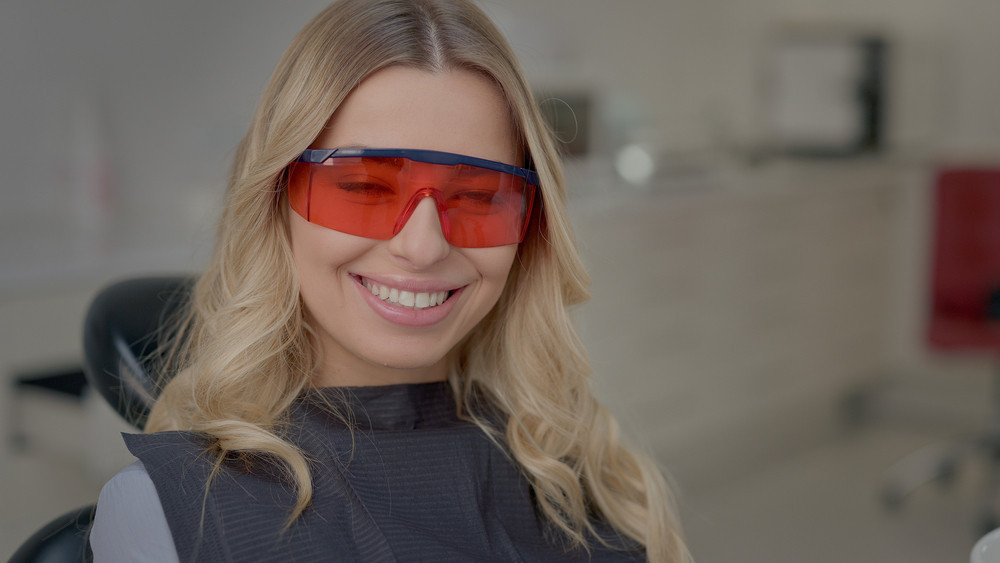How Safe Sedation Dentistry Is Changing the Cosmetic Experience for Anxious Patients
Omaha, United States - July 25, 2025 / Panneton Dental Group /
Introduction
For many people, visiting the dentist provokes anxiety, especially when it comes to undergoing cosmetic procedures. Fortunately, modern dentistry has evolved to address not only aesthetic concerns but also patient comfort. A growing number of experienced cosmetic dentists who offer sedation are making it easier than ever for patients to achieve the smile of their dreams without the fear or discomfort traditionally associated with dental visits.
Cosmetic dentistry is not just about vanity—it plays a significant role in improving self-esteem, dental health, and overall well-being. However, many patients hesitate to undergo cosmetic treatments due to dental anxiety, sensitive teeth, or a strong gag reflex. That's where sedation techniques come into play. Dentists trained in sedation can provide a calm, pain-free experience for patients undergoing procedures like teeth whitening, veneers, crowns, or even full smile makeovers.
This comprehensive guide explores the most common and safest sedation methods used by seasoned cosmetic dentists, detailing their benefits, candidacy requirements, and safety protocols. Whether you're curious about minimal sedation with laughing gas or considering deeper sedation methods, this article will provide the information you need to make informed decisions.
Understanding Cosmetic Dentistry and Patient Anxiety
Cosmetic dentistry focuses on improving the appearance of a person’s teeth, gums, and bite. Treatments may range from minor enhancements, like whitening, to more complex procedures like veneers, dental bonding, or full smile makeovers. Despite the transformative outcomes, many patients feel nervous about undergoing such procedures due to past negative experiences or fear of pain.
Dental anxiety is a real and widespread issue. According to the American Dental Association, nearly 22% of people avoid the dentist because they are afraid. This fear can stem from various sources—previous painful experiences, the sound of dental drills, embarrassment about dental health, or even general anxiety disorders.
To address these fears, many experienced cosmetic dentists incorporate sedation options into their practices. Sedation not only makes the procedure more tolerable for the patient but also allows the dentist to work more efficiently. Patients who are relaxed and cooperative make it easier for the dental team to perform complex treatments without unnecessary interruptions.
Modern cosmetic dentists recognize the psychological aspects of dental care. They create calm, spa-like environments, offer detailed consultations, and use advanced equipment to minimize discomfort. The goal is to ensure that every patient—especially those with heightened sensitivity or phobias—can safely and comfortably benefit from cosmetic enhancements.
Understanding that cosmetic dentistry is as much about emotional well-being as it is about physical appearance helps dentists better serve their patients. Offering safe sedation options is part of a holistic approach to care that prioritizes the patient’s peace of mind as much as their beautiful new smile.
Types of Sedation Techniques Used in Cosmetic Dentistry
There are several sedation techniques available in modern dental offices, each tailored to the needs and comfort levels of the patient. The type of sedation used depends on the procedure, the patient's medical history, and their level of anxiety. Here are the most common types:
1. Nitrous Oxide (Laughing Gas)
This is the most commonly used minimal sedation technique. Administered through a small mask over the nose, nitrous oxide helps the patient feel relaxed and euphoric during the procedure. It takes effect quickly and wears off rapidly, allowing patients to drive themselves home afterward.
Ideal for: Patients with mild to moderate anxiety, and for shorter cosmetic treatments like teeth whitening or bonding.
2. Oral Sedation
This involves taking a prescribed medication (such as diazepam or triazolam) about an hour before the procedure. While patients remain awake, they often feel drowsy and deeply relaxed. Some may even forget parts of the procedure.
Ideal for: Moderate dental anxiety and procedures like veneers, crowns, or implants.
3. IV Sedation
Intravenous (IV) sedation delivers medication directly into the bloodstream, allowing for deeper and faster sedation. Though patients remain conscious, they’re in a twilight state and often have no memory of the procedure.
Ideal for: Patients with high anxiety levels or those undergoing multiple or lengthy cosmetic procedures.
4. General Anesthesia
Rarely used in typical cosmetic procedures, general anesthesia renders the patient completely unconscious. It’s usually administered in a hospital or surgical center.
Ideal for: Extreme cases involving extensive reconstructive surgery or for patients with severe phobias or special needs.
Each method has its advantages and risks. That’s why experienced cosmetic dentists take the time to discuss medical history, comfort levels, and the nature of the procedure before recommending a sedation plan.
Safety Protocols Followed by Experienced Dentists
Safety is a top priority when administering sedation. Experienced cosmetic dentists follow stringent guidelines to ensure that sedation procedures are safe and effective.
Pre-Sedation Assessment
Before recommending sedation, dentists conduct a thorough medical history evaluation. They check for allergies, respiratory issues, and medications that may interfere with sedatives. Some practices also collaborate with anesthesiologists for high-risk patients.
Equipment and Monitoring
Dentists use advanced monitoring equipment during sedation. This includes pulse oximeters, ECG monitors, and blood pressure monitors to track the patient’s vital signs. Backup oxygen supplies and emergency drugs are always kept on hand.
Credentialed Staff
Only dentists trained and certified in sedation techniques are allowed to administer sedatives. Dental assistants and hygienists are also trained in sedation protocols and emergency response.
Informed Consent
Patients receive detailed information about the type of sedation to be used, including its benefits, risks, and what to expect. Informed consent is a crucial step that ensures transparency and builds trust.
Post-Procedure Guidelines
After sedation, patients are provided with recovery guidelines. Those who undergo moderate or deep sedation are required to have someone accompany them home. Follow-up calls are often made to check on patient well-being.
These protocols not only ensure patient safety but also help deliver better outcomes. By combining sedation with modern equipment and compassionate care, cosmetic dentists create a stress-free environment where patients can focus solely on their transformation.
Benefits of Sedation in Cosmetic Dentistry
The advantages of using sedation in cosmetic dental procedures go far beyond just comfort. Here’s how it makes a real difference:
Reduced Anxiety and Stress
For many patients, the mere thought of a dental drill or a long procedure is overwhelming. Sedation reduces the body’s stress response, allowing for a more relaxed experience.
Improved Efficiency
A calm, still patient makes it easier for the dentist to focus and work quickly. Complex procedures can often be completed in fewer sessions.
Enhanced Precision
Dentists can achieve better cosmetic results when the patient is still and relaxed. Whether it’s applying veneers or sculpting composite materials, precision is critical for aesthetic outcomes.
Better Patient Compliance
Patients who previously avoided dental visits due to fear are more likely to return regularly when sedation is available. This improves long-term oral health.
Pain-Free Experience
Even if a local anesthetic is used, sedation ensures the patient is not mentally focused on discomfort, making the experience feel painless.
Sedation dentistry is a transformative approach that empowers patients and practitioners alike. When offered by a skilled cosmetic dentist, it makes the journey to a perfect smile not only achievable but also pleasant.
Who Is a Candidate for Sedation Dentistry?
While sedation is beneficial for many, not everyone qualifies automatically. Here are the typical criteria dentists consider:
Dental Anxiety or Phobia
Patients with a history of dental fear, panic attacks, or traumatic dental experiences are ideal candidates.
Complex Procedures
Individuals undergoing multiple cosmetic treatments or full mouth reconstructions often benefit from sedation.
Sensitive Gag Reflex or Low Pain Threshold
Sedation helps reduce discomfort for patients who find dental procedures intolerable due to sensitivity.
Special Needs Patients
People with physical, cognitive, or behavioral challenges may need sedation to complete necessary procedures safely.
Medical Clearance
Some patients, especially those with chronic conditions or taking multiple medications, may need approval from their primary care physician.
Experienced dentists conduct a thorough evaluation before recommending sedation. The goal is always to match the level of sedation to the patient’s unique needs while maintaining the highest safety standards.
Conclusion
Sedation dentistry has become a cornerstone of modern cosmetic dental practices. It bridges the gap between the desire for aesthetic improvements and the fear that holds many back. Thanks to safe and effective techniques offered by experienced cosmetic dentists, patients can now undergo transformative treatments in comfort and confidence.
Whether you’re considering teeth whitening, veneers, or a full smile makeover, knowing that sedation options are available can change how you approach your dental care. By choosing a dentist who offers the latest sedation methods and prioritizes patient safety, you ensure that your journey toward a brighter smile is smooth and stress-free.
For more information on the safety and standards of sedation in dentistry, visit the American Dental Association’s guidelines on sedation. You may also find the Dental Fear Central support forum helpful for overcoming dental anxiety and learning more about others' sedation experiences.
FAQs
1. Is sedation safe for cosmetic dentistry procedures?
Yes, when administered by a trained and experienced dentist, sedation is safe and well-tolerated by most patients.
2. What type of sedation is best for mild dental anxiety?
Nitrous oxide (laughing gas) is ideal for mild anxiety and short procedures.
3. Can I drive myself home after being sedated?
It depends on the type of sedation. You can drive after nitrous oxide but not after oral or IV sedation.
4. Will I be unconscious during the procedure?
Not usually. Most cosmetic dental sedation keeps you relaxed and awake but unaware of the procedure.
5. How do I know if I’m a candidate for sedation?
Your dentist will review your medical history and anxiety levels to determine eligibility.
6. Are there risks associated with dental sedation?
Like any medical procedure, there are minimal risks, but experienced dentists follow strict safety protocols to minimize them.
7. Does dental insurance cover sedation for cosmetic procedures?
Most insurance plans do not cover sedation for elective cosmetic treatments unless deemed medically necessary.

Contact Information:
Panneton Dental Group
18140 Burke St Suite 100
Omaha, NE 68022
United States
Mark Panneton
http://markpannetondds.com/



